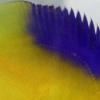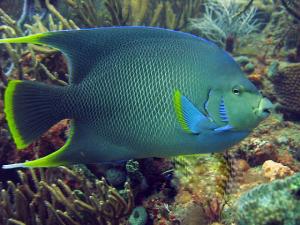-
Posts
16,553 -
Joined
-
Last visited
-
Days Won
29
Content Type
Profiles
Forums
Gallery
Everything posted by yikai
-
Have 2 tuxedo urchins for sale. just your average joe tuxedos. around 1.2 inches in diameter. Reason for selling is because they like to stick my zoa frags on their body travel around my tank with it everywhere. very amusing, but very annoying too. they are very hardworking and eat diatoms, some of my cyano, and they eat coraline algae too. good news for those keeping coraline in check. selling at $5 each. dealing will be done a tanah merah. Not free 15th (thursday) and saturday. best to deal on friday. sms 97555430 for faster dealing,
-
Btw, we going CF to get cleaner crew for reddevilz. last week forget to buy so must go again
-
Hey bros. any1 going to LCK/CF on thursday 15th october? Don't mind giving me and bro reddevilz a lift? hehe both of us always wan go CF/LCK but no transport lah let me know if there's anyone willing to tompang us! ty can call/sms me at 97555430 or
-
wow! the hawaiian ones! these are the Hymenocera picta ones and compared to the H elegens, the colour contrast between white and purple is much more beautiful.
-
topic moves to kopi-tiam section not related to DIY. have fun discussing
-
yes. they do sell late evening. bought some today around 5+. i think they sell fresh water daily. so could be they repacking it to avoid staling of the water. me not sure
-
this is a rhomboid fairy wrasse. Cirrhilabrus Rhomboidalis. One of the holy grails of wrasses. comparing it to a six line, it's hehe
-
no problem regarding bacteria, most come with instructions. so just follow them accordingly RO/DI units are important to remove harmful elements in tap water, such as Cu2+ (copper), SiO2- (silicates), NH3 (ammonia), NO3- (nitrates), PO4 (phosphates) and other harmful chemicals. not to mention chlorine (Cl-). you can also buy distilled water for your water change. pricey though! HTH
-
to get a faster reply, try doing a search. many of these simple questions have been answered before that said, feel free to post here too. many of us are friendly enough to help. i suggest reading up first, and then reconfirm by asking again. many of these have already been answered, and there are alot of information in the internet
-

OMG! Look at these hybrids and rare fishes!
yikai replied to Digiman's topic in FOWLR (Fish-only with Live-rock)
-
hydrometers can be suprisingly accurate have seen/used hydrometers that are more accurate than refractometers.
-
im guilty of that too. ur not alone. and mine is 3ft only
-
thread moved as requested by kikobananas.
-
this is a hammer lah haha. v cute
-

giant bristleworm, blue blood :)
yikai replied to yikai's topic in Disease treatment/parasite/pest control
yea im worm man! fear my ability to iritate reefers in a futile bid to remove me from your tank hehehe -
Decided to create this sticky to help new reefers get through this period. We all know about cycling, but do we all know exactly what to do? What exactly is cycling? How long? Why? This is a very important step in a successful marine set-up. Firstly, let's start with the basics. What is Ammonia, Nitrite and nitrate? This is afterall, what we want to understand during our cycling process. Cycling a system is crucial in establishing the nitrogen cycle, and cultivating the important bacteria needed for the nitrogen cycle. Harmful ammonia (NH3) is converted to still harmful nitrite, (NO2), and is then eventually converted into harmless, but still harmful in high amounts, nitrates (NO3). In certain cases, NO3 is converted into harmless nitrogen gas (N2). In the cycling process, ammonia accumulates and chemo-autotrophic bacteria will start to utilize it. As these bacteria increases, NH3 drops, and NO2 increases. This spike in NO2 triggers the second group of bacteria to form. These then utilize the NO2 and NO3 is released as a by product. This marks the end of the Nitrogen cycling in most tanks. The final product, NO3, then accumulates to incredulous levels unless removed physically, i.e water change, or chemically, i.e AZ-NO3, denitrator, nutrient export i.e chaeto, fuge. In some cases, anaerobic bacteria convert the NO3 into harmless N2 gas. This is difficult to achieve in most aquarium as anaerobic sites are needed to provide refuge for these bacteria. Such sites include deep within liverocks, or a deep sand bed. (which will not be discussed here). Cycling the tank is important in establishing these useful bacteria, for your tank. The longer you cycle, the more the bacteria population. This results in a stable tank with enough beneficial bacteria to maintain low NH3 and NO2 concentrations in your tank. The magic ingrediant to cycling is TIME, and PATIENCE. No matter WHAT you use, bacteria etc, time and patience is the key to a good cycling. It takes a few weeks for bacteria to be thoroughly established. BE PATIENT! <img src="http://www.sgreefclub.com/forum/public/style_emoticons/<#EMO_DIR#>/smile.gif" style="vertical-align:middle" emoid="" border="0" alt="smile.gif" /> Take the time off to read up on livestock, corals and make a list of what you would like to get! The time will fly right pass, and you get a good cycled tank, plus a wealth of knowledge while waiting for the tank to cycle. Add liverock and livesand to your tank while cycling. This will allow a place and source of beneficial bacteria. Also, during cycling, your liverock will have time to mature and grow wonderful stuff, such as sponges, beneficial macroalgae, tunicates, feather worms and maybe even some hitchhiker corals! Next step, is kicking off the cycling process. Of course, we need to start off with some ammonia, to get the cycling process started. There is plenty of ammonia in liverock when u first introduce it into your system. Ammonia from die-offs from the liverock will be a source. If you are afraid it might not be enough, adding in some fish food or a small piece of market prawn will work well. I do not advocate using livestock for cycling processes. Some people start off with damsels and other wildlife. please do not do this. Spare a thought for the poor fish. just because they are hardy enough to withstand the horrible conditions of cycling, it is not humane to put them through it. Why risk the life of the fish, or the fact that the fish could introduce a disease to your tank before you even start adding in real lifestock!? Damsels are also very aggressive, and if they survive the cycling, they will kill your future inhabitants and it will be a pain to remove them. How are you going to test if your cycling is over? Test kits! <img src="style_emoticons/<#EMO_DIR#>/tongue.gif" style="vertical-align:middle" emoid="" border="0" alt="tongue.gif" /> track the cycling process by using test kits. Ammonia will start spiking first, and when it drops to 0, NO2 will start increasing. When NO2 decreases, you will see an increase in NO3. cycling is complete when NH3, and NO2 drop to zero. the final product will be some/lots of NO3. Doing water changes to reduce the NO3 will be good before adding livestock. Your first inhabitants can be some clean up crews to clear off algae that might have grown during the cycling. Congratulations. You have gone though your cycling process. Take care not to overstock your tank so soon. You might risk distrupting the delicate balance. Add in new livestock slowly to allow more bacteria to recolonize to cope with the new increase in bioload. Happy reefing, and hope this article is of use to the new reefers
-
1 week is way too short. minimum 3 weeks at least if u jsut started. bio-rings are not meant to be placed as a substrate.. usually in sump. remove them as they will trap dirt and case massive NO3 spike. + you do not have a skimmer, the biorings will kill you.
-
that is a gbta i think. this species moves very little if its requirements are met. if not, the tend to move around alot.


